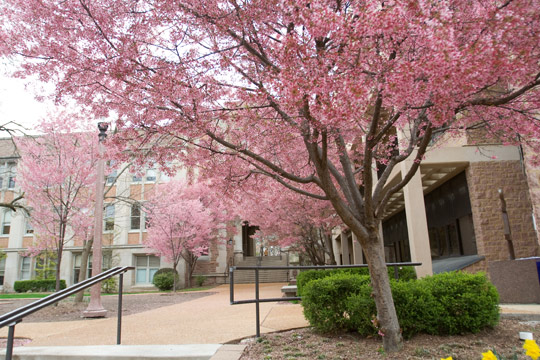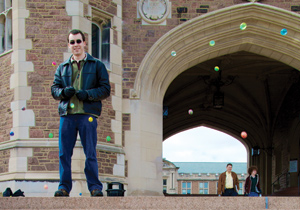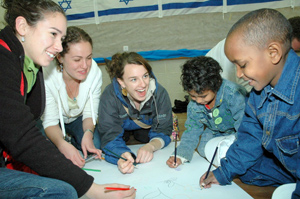 Scott Bressler
Scott BresslerIn response to a reaccreditation report calling for an improved level of diversity on the Washington University campus, the University has formed the Coordinating Council for Diversity Initiatives, a group devoted to the issue of diversity and gender equity in faculty and administrative positions.
This report was part of the 2005 North Central Association reaccreditation report, which gave the University positive feedback overall.
When asked if there were any specific ways in which the University was addressing the reported lack of diversity on campus, Chancellor Mark Wrighton was quick to clarify the results of the accreditation report.
“The Higher Learning Commission of the North Central Association did not say that we ‘lack diversity,'” Wrighton wrote in an e-mail. “What was said is that we have not made as much progress in this arena as we have in many other areas. In fact, in comparison to other premier research universities we are not exceptional one way or the other.”
Wrighton explained that a University-wide effort is being made to recruit women and minorities to senior positions within the administration. Under the purview of Leah Merrifield, chair of this council and special assistant to the chancellor on diversity, the University conducts recruiting workshops intended to ensure that qualified individuals from a variety of backgrounds are considered throughout the hiring process.
“Recruiting workshops have been conducted to acquaint those who have recruiting responsibilities with best practices with respect to assuring that comprehensive and inclusive searches are conducted,” Wrighton wrote.
Merrifield said the University has also created community-building events targeted at faculty with diverse backgrounds and supported faculty and staff groups devoted to minority issues.
The University has also partnered with other universities and associated institutions to develop the St. Louis Higher Education Recruitment Consortium (HERC). The organizations pool information regarding talented professionals in order to attract and retain qualified individuals from a variety of backgrounds to the St. Louis area.
“Recruiting and retaining faculty of the quality we seek, majority or minority, is a challenge, because the competition is very keen. Every search for a new faculty member involves an effort to draw women and members of minority groups in to the pool of candidates,” Wrighton wrote.
According to Wrighton, competition for the existing faculty at the University is fierce.
“Retaining faculty who thrive in our setting is a growing challenge, because our University is now so visible and others want to improve, too,” he wrote.
The University has made extensive progress in student body diversity, and Wrighton says the University is modeling its efforts on this successful initiative. Some students expressed the opinion that the University campus is diverse but could improve, which reflects the results of the accreditation.
Senior Ruth Poland said she believes that the diverse groups within the student body should be more integrated.
“It is diverse but segregated. I think it’s as diverse as the next private school campus, but I think that it’s certainly not better. I think there’s lots of room for improvement,” Poland said.
Senior Laelle Busch echoed this feeling and also says that the student body could be more integrated.
“I feel there’s a large contingent of ethnic groups staying within their ethnic groups, especially international groups,” Busch said.
Ceyla Erhan, a senior international student from Turkey, says that while she feels accepted at the University and that there are many international students, some areas of the world remain underrepresented.
“There’s definitely international students, but not from all over the world. There are huge groups of international students, say, from China or Korea, but, say, like from Turkey only a few. I’ve encountered only two from France,” Erhan said.
Wrighton stresses that the entire campus must be involved in the University’s diversity initiative and be devoted to this continuous process.
“Our aim is to reflect the face of America in all segments of our community, students, faculty and staff,” Wrighton wrote.
 Courtesy of WUSTL Photo Services
Courtesy of WUSTL Photo Services Scott Bressler
Scott Bressler Courtesy of Lady Film
Courtesy of Lady Film Scott Bressler
Scott Bressler Scott Bressler
Scott Bressler Courtesy of Elliyahu Melloule for Yokneam Community Photographer
Courtesy of Elliyahu Melloule for Yokneam Community Photographer